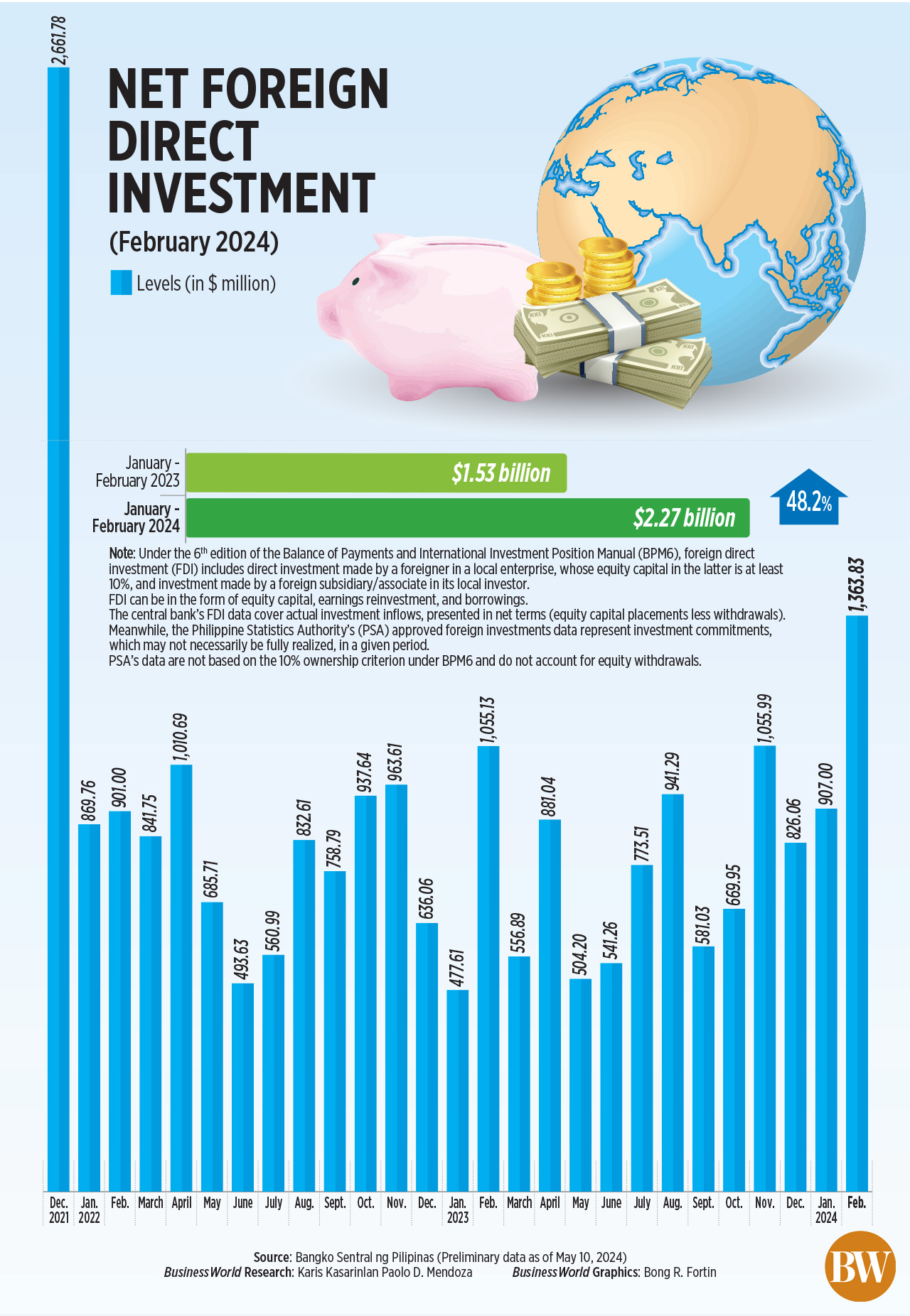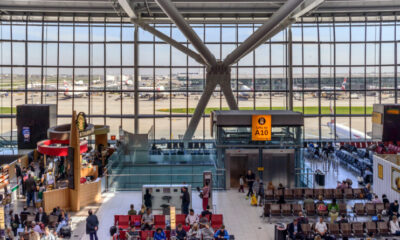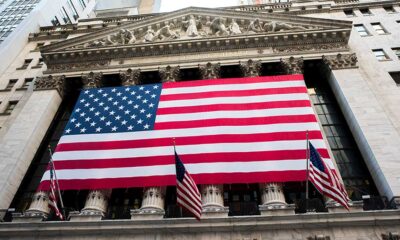Business
Net inflows of foreign direct investment rise to the highest level in two years

Net foreign direct investment (FDI) inflows rose to the highest level in more than two years in February, data from the Philippine central bank showed.
Data from the Bangko Sentral ng Pilipinas (BSP) shows net foreign direct investment inflowsFThe lows rose 29.3% to $1.364 billion in February, compared to $1.055 billion in the same month a year ago.
This was the highest level in 26 months or since netting $2.662 billionFlows recorded in December 2021.
Month after month, net foreign direct investmentFThe lows rose 50% from $907 million in January.
The BSP said this was mainly due to the increase in non-residents’ net equity investments (excluding the reinvestment of profits), which includeFhave compensated for the decline in net investments in debt instruments.
Non-resident net investment in equity (excluding income reinvestment) shot up (927.3%) from $74 million in the same month in 2023 to $764 million.
Broken down, equity withdrawals more than doubled (142.1%) to $93 million in February, compared to $38 million a year ago, while placements rose (660.2%) to $857 million, compared to $113 million a year past.
The BSP said the majority of share placements in February came mainly from the Netherlands (89%). These were largely invested in the Ffinancial and insurance sector.
On the other hand, non-residents’ net investments in local branch debt instruments fell 41.5% to $533 million in February, compared to $912 million a year earlier.
BSP data also showed that investments in stocks and shares in mutual funds rose 480.4% in February to $830 million, up from $143 million year-on-year.
On the other hand, earnings reinvestment fell 3.8% to $66 million, compared to $69 million a year ago.
TWO-MONTH PERIOD
For the period January to February, total foreign direct investment was netFThe lows rose 48.2% to $2.271 billion, compared to $1.533 billion last year.
Equity investments, excluding reinvestment of profits, rose sharply (350.3%) to $753 million in recent years. Ffirst two months, compared to $167 million a year ago.
Placements nearly tripled (265.7%) to $956 million, while withdrawals more than doubled (115.5%) to $203 million.
Earnings reinvestment rose 7.4% to $165 million in the two-month period, compared to $154 million in the same period a year ago.
Investments in debt instruments rose 11.6% to $1.353 billion in the January to February period, compared to $1.212 billion last year.
Rizal Commercial Banking Corp. chief economist Michael L. Ricafort said the increase in foreign direct investment inFlows can be attributed to improved economic performance.
“Philippine economic growth is among the fastest in Asia… bringing more foreign direct investment into the country amid favorable demographic conditions and lower long-term interest rates that are helping to boost investment globally,” he said in a Viber message.
The Philippine economy grew 5.7% in the first quarter, faster than 5.5% in the previous quarter but slower than 6.4% last quarter. Ffirst quarter of 2023.
The country’s growth is also about the same as Vietnam’s (5.66%) and ahead of China (5.3%), Indonesia (5.1%), Malaysia (3.9%) and Singapore (2 .7%).
“Increased foreign direct investment could also have been partly driven by some realized investment commitments made for more than a year during the government’s various foreign trips,” Mr. Ricafort added.
The Department of Trade and Industry (DTI) previously reported that President Ferdinand R. Marcos Jr.’s foreign trips have generated $14.2 billion in actual investments, accounting for about 20% of investment commitments.
As of December, the president’s business trips generated commitments of $72.2 billion, the DTI said.
Mr Ricafort said possible interest rate cuts could help lower borrowing costs and lead to more foreign direct investmentFlows.
The BSP held firm for the fourth time in a row in April, maintaining its benchmark interest rate at a 17-year high of 6.5%. The Monetary Board will hold its next policy review on Thursday. The BSP expects net foreign direct investmentFlow of $9 billion at the end of 2024. — Luisa Maria Jacinta C. Jocson











